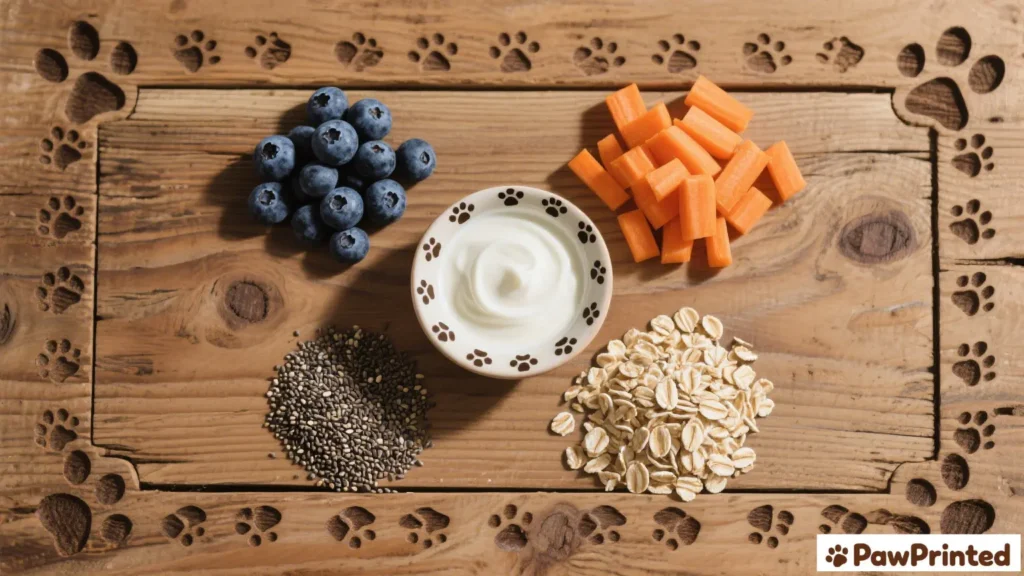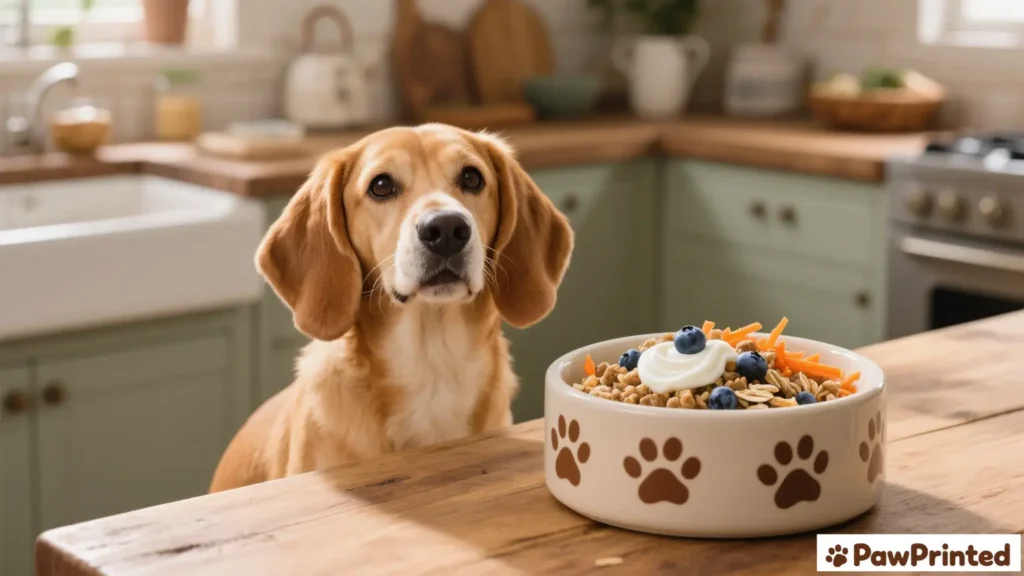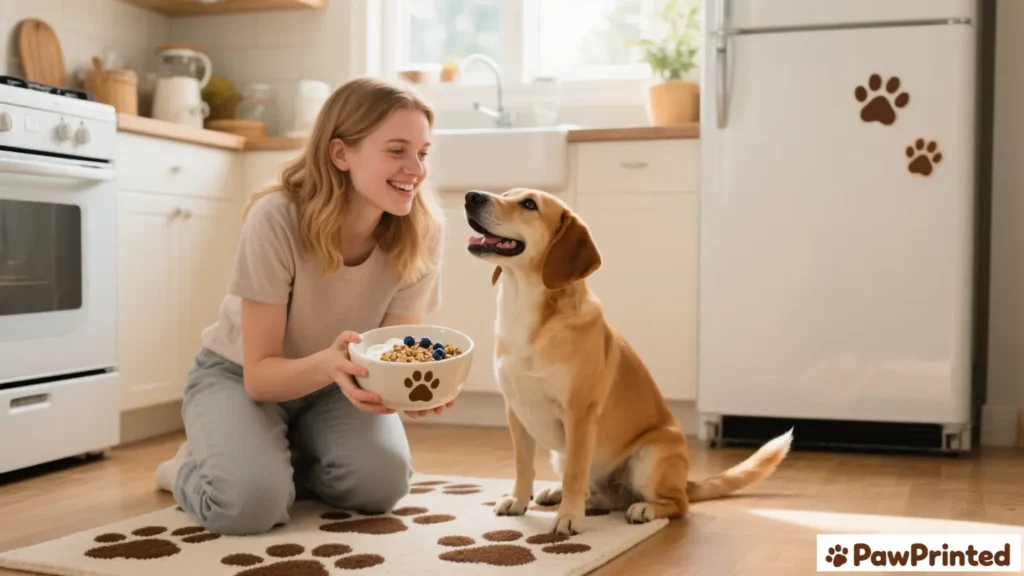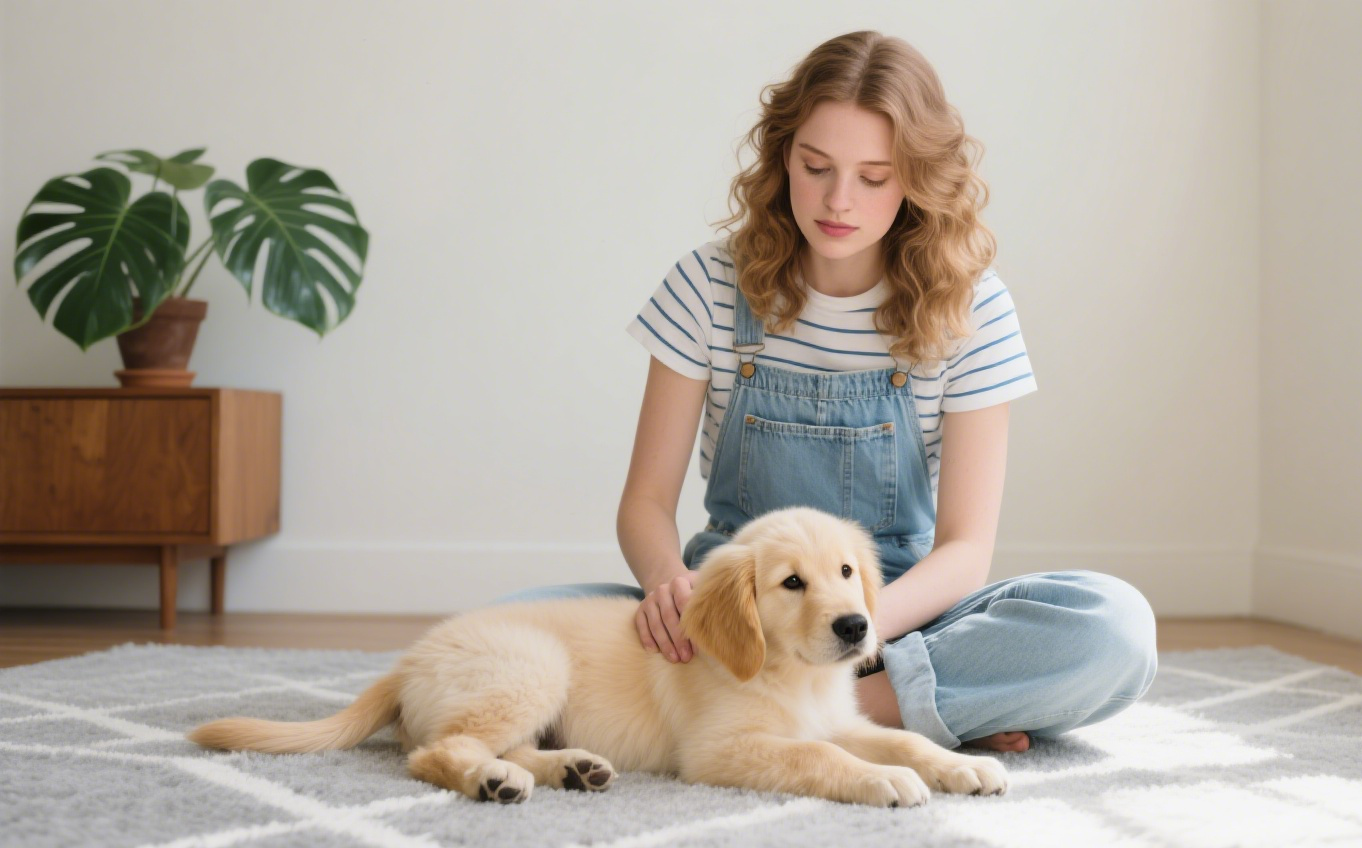Gentle daily gut support for sensitive stomachs, antibiotic recovery, and overall digestive balance.
I still remember the week Ethan’s tummy went on strike—soft stools, messy mornings, and that worried look he gives me when he isn’t himself. We had just finished a short antibiotic course. Our vet suggested easing his gut back into balance with a gentle probiotic routine, so I tested a few formats—powder, soft chews, and a “treat-like” option he actually gets excited about. Within days, his stools were firmer, gas calmed down, and he was back to trotting to the door for his evening walk.
Probiotics aren’t a magic wand, but for many dogs they’re a steady, vet-approved way to help the gut do its job—digest food, make nutrients accessible, and keep the microbiome more resilient after diet changes, stress, or medications. Below is what consistently worked in our home and with readers who share the same “sensitive-stomach dog parent” life.

⚠️ See your vet if your dog has blood in stool, persistent vomiting, black/tarry stool, fever, severe lethargy, or diarrhea lasting more than 48 hours, especially in puppies or seniors.
Why Dogs Benefit From Probiotics
Healthy canine guts are busy ecosystems. When stress, diet changes, or antibiotics disrupt that balance, dogs may show loose stools, gas, itching from food sensitivities, or general discomfort. A well-chosen probiotic can help repopulate beneficial bacteria, support the intestinal barrier, and make transitions (like food switches) kinder on the stomach. For dogs with ongoing sensitivities, pairing a probiotic with a steady base diet—such as limited-ingredient options—often brings the quickest relief.

What Worked For Us (Narrative, No Hard Sell)
For daily, invisible-to-the-bowl support, I lean on a clean powder that disappears into dinner—Native Pet’s gentle probiotic (go/native-probiotic) has been the easiest to keep consistent. When Ethan needs something he thinks is a reward, a soft chew like Purina FortiFlora (go/fortiflora) or a simple chew format such as Nutridog’s probiotic bites (go/nutridog-probiotic) helps me stick to the plan without a fuss. On weeks when I want “snack energy” to do the heavy lifting, I rotate in Ollie’s probiotic treats (go/ollie-probiotic-treats) and round things out with Probios soft chews (go/probios-softchews) for a wider strain mix. If urinary comfort is a concern in your home, Zesty Paws’ cranberry line (go/zesty-cranberry) layers on targeted support while the base probiotic keeps the gut on track.

Our Simple Routine
- Pick a base format your dog loves. Powder for seamless meals (go/native-probiotic) or soft chews for “treat energy” (go/fortiflora, go/probios-softchews).
- Start low, go slow. Half dose for 3–5 days, then move to the regular serving to limit gas during adaptation.
- Pair with gentle base diets. If you’re troubleshooting sensitivities, peek at dry picks for sensitive stomachs or wet options for easier digestion.
- Allow 10–14 days. Most dogs show firmer stools and better appetite within two weeks when diet and probiotic remain consistent.
Comparison Table (Quick Scan)
| Option | Why It Helps | Best For |
|---|---|---|
| Native Pet Probiotic (Powder) | Mixes invisibly into meals; steady daily microbiome support. | Dogs who notice texture changes; routine daily gut care. |
| Purina FortiFlora | Palatable, vet-favorite chew; good starter for picky eaters. | Post-antibiotics, travel stress, mild loose stools. |
| Nutridog Probiotic Chews | Convenient daily bites with digestive support blend. | Families who prefer a “treat-like” routine. |
| Ollie Probiotic Treats | Treat-first mindset; keeps compliance high. | Reward-driven pups; training-friendly dosing. |
| Probios Soft Chews | Soft texture; broad gut support strains. | Seniors or dogs who prefer softer textures. |
| Zesty Paws (Cranberry) | Pairs digestive support with urinary comfort focus. | Dogs needing gentle urinary tract support alongside gut care. |

Choosing Formats & Reading Labels
Powder vs. chews. Powders disappear into food; chews feel like treats (great for picky pups). Look for clearly listed CFU counts per serving and named strains. Pair your choice with consistent, gentle base diets and introduce slowly to minimize gas.
Tip: Match format to lifestyle. If you sometimes skip breakfast or travel often, soft chews are easier to remember. If your dog ignores new textures, powders keep routines unchanged.
FAQ (Vet-Informed)
Generally yes when used as directed. Dogs with severe illness or immune compromise need a vet’s guidance first. See overview from AKC and veterinary sources for context (AKC, VCA).
Some strains overlap, but canine-specific products are formulated for dogs’ GI tract and dosing. When in doubt, stick to dog-labeled options or ask your vet.
Many dogs show firmer stools within 3–7 days, with steadier improvements over 2 weeks. If symptoms persist, revisit diet (e.g., LID) and check with your vet.
Daily is ideal for sensitive stomachs, antibiotic recovery, or stress-prone pups. During quiet periods, you can taper to a maintenance schedule—consistency matters more than a high peak dose.

Note Before We Wrap
If you don’t want to cook daily, check our dry food picks — those were Ethan’s daily backups: Best Dry Dog Food for Sensitive Stomach and Best Wet Dog Food for Sensitive Stomach.
Wrapping It Up
For many dogs, probiotics are a small daily habit with outsized payoffs—calmer tummies, better stools, happier mealtimes. Start with a format your dog loves, pair it with a steady, gentle base diet, and give it two weeks. If you’re stuck, begin with a mild wet base and then transition to a steady dry option; keep the probiotic constant and the rest will feel easier.
Have a gut-friendly tip that helped your pup? Share it in the comments—I’m always collecting ideas for fellow sensitive-stomach parents.
More gentle reads: Dog Food for Allergies · Limited-Ingredient Dog Food · Homemade Dog Food for Sensitive Stomach · Dog Food Transition Guide

